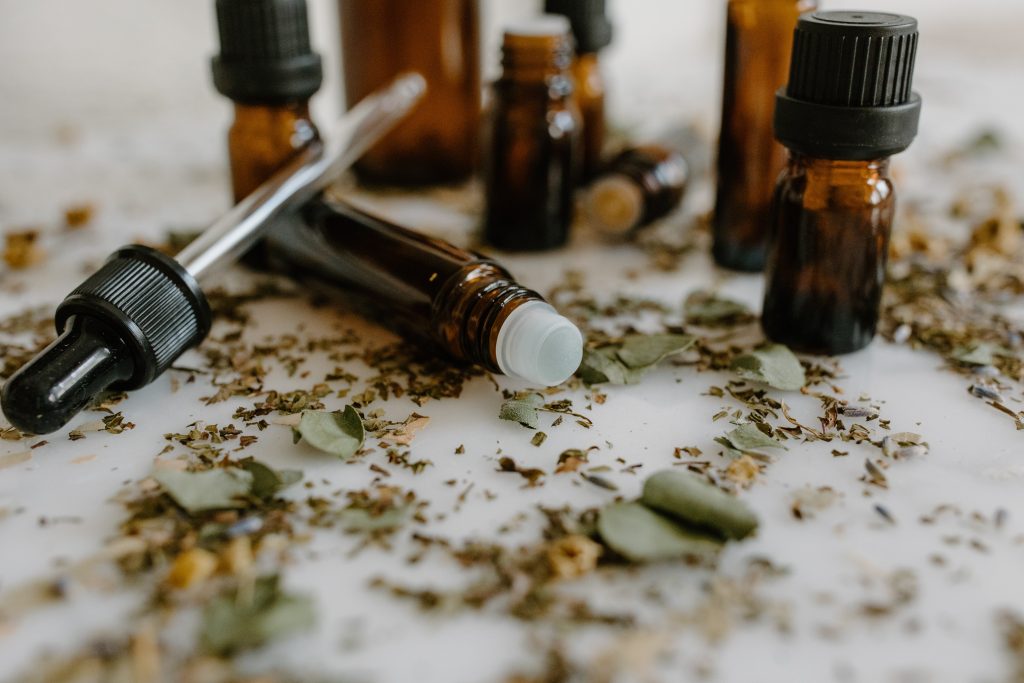Discover the potential of oils and topical ingredients in improving the texture and color of scars.
Can Oils and Topical Ingredients Improve Scar Texture and Color?

Do you ever look at your scars and wish they could magically disappear? Well, maybe they can’t completely vanish in the blink of an eye, but there are ways to improve their texture and color. One way is by using oils and topical ingredients. Yes, you heard that right. You can now spice up your scar treatment routine with a touch of nature and science. So, let’s delve into the wonderful world of oils and topical ingredients and find out how they can work their magic on your scars.
Understanding Scars: Causes and Characteristics
Before we jump into the oily details, let’s take a moment to understand scars better. Scars are like trophies that our body proudly displays after an injury, surgery, or even a pesky pimple. They can come in all shapes and sizes, from those tiny reminders of childhood accidents to the battle scars earned in epic adventures. But what causes scars to form, and what makes them so unique? Let’s find out.
Scars are not just a simple mark on our skin; they are a testament to our body’s incredible ability to heal itself. When our skin gets injured, our body goes into full superhero mode. It swiftly begins the healing process by forming a scar. The formation of scar tissue is a complex process involving collagen, the superhero protein that provides structure to our skin. During the healing process, collagen fibers are laid down haphazardly, creating a different texture and color compared to the surrounding skin.
But wait, there’s more! Did you know that scars can tell a story? Each scar has its own unique characteristics that can give us clues about its origin and the healing process. Not all scars are created equal, my friend. We have an array of scar types, each with its unique characteristics.
Let’s start with hypertrophic scars. These rebellious scars like to pile up and go beyond the boundaries of the original wound. They are often raised and can be red or purple in color. Hypertrophic scars can be a result of an overproduction of collagen during the healing process.
On the other hand, we have atrophic scars. These scars prefer to sink into the skin, leaving a dimpled appearance. They can be the result of a loss of collagen or fat tissue at the site of the injury. Atrophic scars are commonly seen in conditions like acne or chickenpox.
And let’s not forget those notorious keloid scars. These scars have a mind of their own and can grow larger than life itself. Unlike hypertrophic scars, keloid scars extend beyond the boundaries of the original wound and can continue to grow even after the wound has healed. They are often thick, raised, and have a shiny appearance. Keloid scars are a result of an overproduction of collagen and are more common in individuals with darker skin tones.
Oh, scars, you truly know how to make an entrance! They come in different shapes, sizes, and colors, each with its own unique story to tell. So, the next time you spot a scar, take a moment to appreciate the incredible journey of healing that our body has gone through.
The Role of Oils in Scar Treatment
Now let’s dive into the exciting world of oils and their role in improving scar texture. Oils have been used for centuries in various cultures for their soothing and moisturizing properties. But can they really help in fading those stubborn scars? Let’s explore further.
When it comes to scar treatment, oils have become a popular choice due to their natural and gentle approach. They offer a plethora of benefits that can aid in the healing process and improve the overall appearance of scars. But which oils are the most effective? Let’s take a closer look.
Popular Oils Used for Scar Treatment
There’s a whole buffet of oils out there, each offering its unique benefits for scar treatment. Let’s start with the magnificent rosehip oil, known for its regenerative powers that can make your scars say, “Goodbye, I’m outta here!” This powerhouse oil is rich in essential fatty acids, such as omega-3 and omega-6, which help promote cell regeneration and improve skin elasticity.
Then there’s the versatile lavender oil, which not only smells heavenly but also helps calm inflammation and improve skin texture. Lavender oil contains anti-inflammatory properties that can reduce redness and swelling associated with scars. Its soothing aroma also provides a sense of relaxation, making it a popular choice for scar treatment.
And if you want to indulge in a tropical treat, try some coconut oil, known for its moisturizing magic. Coconut oil is packed with medium-chain fatty acids that penetrate deep into the skin, providing intense hydration and nourishment. This can help soften the appearance of scars and promote a smoother complexion.
How Oils Work to Improve Scar Texture
So, what’s the secret behind these oils’ scar-fading powers? The answer lies in the wonderful world of fatty acids, vitamins, and antioxidants that they bring to the table. These nutrients help nourish the skin, boost collagen production, and improve overall skin texture. It’s like giving your scars a VIP ticket to a spa day. Who wouldn’t want that?
When applied to the skin, oils create a protective barrier that locks in moisture and prevents dehydration. This hydration is crucial for scar healing, as it promotes a healthy environment for cell regeneration. The fatty acids found in oils also help strengthen the skin’s natural barrier, reducing the risk of further damage and promoting a smoother texture.
Furthermore, the vitamins and antioxidants present in oils play a vital role in scar treatment. Vitamin E, for example, is a powerful antioxidant that helps protect the skin from free radicals and supports collagen production. This, in turn, can improve the elasticity and firmness of the skin, reducing the appearance of scars.
Additionally, oils can have a soothing effect on the skin, reducing redness and inflammation commonly associated with scars. They can also help fade discoloration and hyperpigmentation, restoring a more even-toned complexion. With consistent use, these oils can gradually fade scars, leaving you with smoother, more confident skin.
In conclusion, oils have proven to be valuable allies in scar treatment. Their nourishing properties, combined with their ability to promote cell regeneration and improve skin texture, make them a popular choice for those seeking natural solutions. So, why not give your scars the royal treatment they deserve and embrace the power of oils?
Exploring Topical Ingredients for Scar Improvement
Oils are not the only ones stealing the spotlight in scar improvement. There’s a colorful cast of topical ingredients that can also lend a helping hand. Let’s unravel the mystery behind these ingredients and see if they can really make your scars go from “meh” to “wow!”
When it comes to scar treatment products, the options seem endless. Browsing through the aisles, you’ll spot ingredients like vitamin E, aloe vera, and shea butter playing the lead roles. These ingredients have been praised for their moisturizing and soothing properties, making them the perfect candidates for a scar treatment extravaganza. Imagine your scars being part of an epic show, where they are pampered and nurtured, transforming from dull and lifeless to radiant and vibrant.
But let’s not stop there. The effectiveness of topical ingredients goes beyond just moisturizing and soothing. Can they really make a difference in scar color? The answer is a resounding “yes!” Some ingredients, like vitamin C and licorice extract, have skin-brightening properties that can help fade those pesky dark spots on your scars. These ingredients work their magic, targeting the melanin production in your skin, gradually lightening the discoloration and revealing a more even skin tone. With these ingredients on your side, your scars won’t be able to hide their vibrant personalities any longer.
So, why settle for “meh” when you can aim for “wow!”? The world of scar improvement is filled with exciting possibilities, and topical ingredients are here to lead the way. Whether it’s the moisturizing power of vitamin E, the soothing properties of aloe vera, or the skin-brightening effects of vitamin C and licorice extract, these ingredients are ready to transform your scars into a work of art. Embrace the journey, explore the options, and let your scars shine like never before.
Scientific Evidence Supporting the Use of Oils and Topical Ingredients
Now, you might be thinking, “Can I trust these oils and topical ingredients, or is this just another beauty myth?” Fear not, my skeptical friend! There is scientific evidence to back up the claims of these scar-fighting heroes. Let’s take a closer look at the research.
Clinical Studies on Oils and Scar Improvement
Various studies have shown promising results when it comes to using oils for scar improvement. For example, a study published in the Journal of Cosmetic Dermatology found that rosehip oil helped improve the appearance of post-surgical scars. Another study in the International Journal of Molecular Sciences showed that lavender oil exhibited wound-healing properties. So, science has spoken, and it’s giving these oils a big thumbs up!
Research on Topical Ingredients and Scar Color Reduction
As for topical ingredients, they have also caught the attention of researchers. A study published in the Journal of Drugs in Dermatology revealed that the topical application of vitamin C helped decrease scar pigmentation. In another study published in the Journal of Clinical and Aesthetic Dermatology, the use of licorice extract was found to be effective in reducing hyperpigmentation. It’s no longer a beauty myth, my friend. These ingredients are backed by some seriously impressive research!
Practical Tips for Using Oils and Topical Ingredients
Ready to embark on your scar improvement journey? Here are some practical tips to make the most out of oils and topical ingredients:

How to Apply Oils for Scar Treatment
- Cleanse your scarred area with a gentle cleanser.
- Pat the area dry with a soft towel.
- Apply a few drops of your chosen oil onto your fingertips.
- Gently massage the oil into your scars using circular motions.
- Allow the oil to absorb into your skin before dressing up your scars with your favorite bandage or clothing.
Precautions When Using Topical Ingredients
- Always perform a patch test before using any new topical ingredient to check for allergies or skin sensitivities.
- Follow the instructions on the product packaging for the recommended usage frequency and amount.
- Be patient and consistent with your scar treatment routine. Rome wasn’t built in a day, and neither were perfect-looking scars.
Now that you have all the oily and topical ingredient secrets, it’s time to bid farewell to those dull scars. Embrace the power of nature and science, and let the journey to scar improvement begin!





